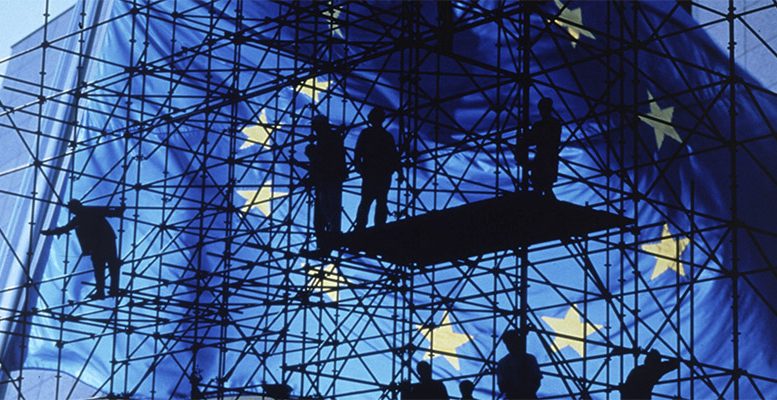Suprising as it may be, 18 of the 19 members of the Eurozone saw an increase in GDP in Q1’17 with respect to Q4’16. Spain’s GDP improved by 0.6%; Italy managed to grow (0.2%); Germany and France clocked up a 0.4% rise. Only Greece remained in the red. The unemployment rate in the region has officially fallen to 9.6%…there is growth. And, finally, there is inflation, but there is still fear. This is the situation in the Eurozone half-way through 2017. Bear in mind that this is, or is intended to be, no more than a temporary snapshot. Not an isolated episode of a cinematographic series with the same storyline.
For reasons which are fairly obvious, it’s interesting to focus on the German economy’s recent path: making up 29% of total eurozone GDP, it has an open system and an industry which is particularly cohesive with adjacent countries. In Q1’17, Germany exported goods worth 536 billion euros and imported goods to the tune of 490 billion. It exported 6% more than China and 40% more than the US.
In conclusion, German GDP grew 1.9% in 2016. But the start of 2017 for the Eurozone as a whole shows that Germany is not the exception. Aside from countries with less weighting in global GDP, Ireland, Spain, Holland, Portugal and Austria have increased growth by 0,5-0,6%. Italy, the third largest economy in the Eurozone, also posted a weak rate of growth, 0.2%, in the end. Germany and France registered 0.4% growth and only poor old Greece remained in the red. The unemployment rate has officially dropped to 9.6%, although the ECB continues to use different definitions and puts the rate several points higher.
The trade potential of the EMU, fundamentally an exporter of manufactured goods and an importer of energy and raw materials, is summarised by very high figures and high growth rates. In the first quarter of 2017, the Eurozone exported goods worth 536 billion euros and imported 490 billion; comparatively speaking (using a quarterly average for the previous year) the Eurozone exported about 6% less than China and imported 15% more. In the case of the US, the differences are 40% more and 17% less, respectively. In March of this current year, European exports increased by 13% and its imports by 17%, coefficients which demonstrate the area’s dynamism.
The total figures offer a stark indication of the problems both the continent, and the rest of the world would face from any step backwards in the free trade framework under which we live. And to give you an example which is more concrete and closer to home, it’s worth not losing sight of the fact that the UK takes up about 12% of the exports from the Eurozone and supplies 10% of the imports – we hope that those who favour a hard Brexit evaluate in time what these figures mean.
In the case of the Eurozone it’s particularly worth following the Markit index, prepared by a private company which gathers up the results of a monthly survey of purchasing managers from several hundred companies: it’s a purchasing managers index. The level of business confidence which the index reflects reached 56.8 points last April. This is the highest figure for the last six years, according to Markit. The latter’s analysis would seem too optimistic were it not based on reliable statistics.
Its chief economist, Chris Wiliamson, has no doubt about stating that the survey’s figures will force “an increase in estimates on the part of many analysts with respect to eurozone economic growth in 2017″. Investment banks like Morgan Stanley and others which closely monitor the situation in Europe have acknowledged – in automotive terminology – that despite the cloudy backdrop resumed above, “the Eurozone has geared up” (a very significant view because it was given before the first electoral date for this year, namely the Dutch elections.)





